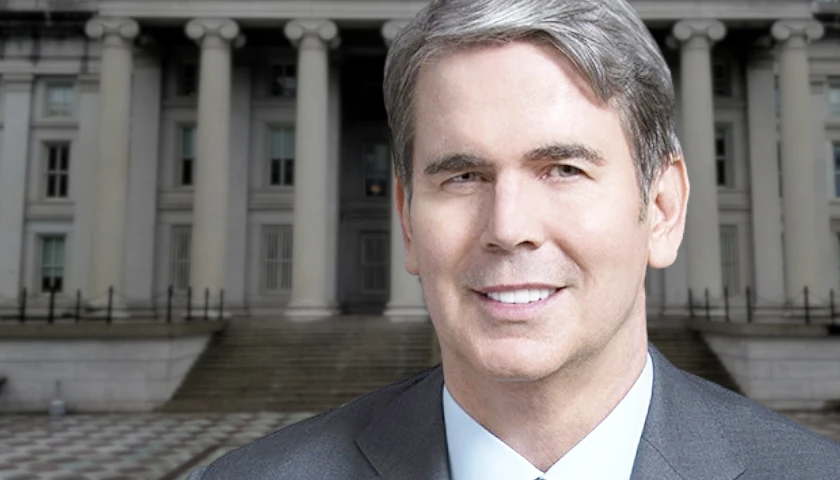by J.T. Young
Comparing current polling to 2020’s results, President Joe Biden cannot win reelection in 2024. To win in 2020, Biden had to roll up a big popular-vote margin to squeak to victory in the Electoral College. If current polls are correct, or even close, Biden’s needed popular support is nonexistent. And looking at the economy, it is hard to see from where it will come.
Biden’s 2020 victory had a distinct pyramid shape. At the base was a 7.1 million–vote popular margin. In the middle was his 4.4 percentage margin in total popular votes cast. At the apex was a surprisingly small 74-vote difference in the electoral vote: 306 to 232.
That electoral margin is even more precarious than it first appears. Biden had just 36 electoral votes more than the 270-threshold needed to win. On the other side, then-President Donald Trump needed just 38 electoral votes to reach 270.
Looking at the same results through a 2024 lens, Biden’s margin shrinks further still. That’s because, after the Census reapportionment, the states Biden won lost three seats — three electoral votes — while Trump picks up those three. So, if 2020 results repeated on the 2024 map, the outcome would be 303 to 235 — with Biden’s margin shrinking to 68 electoral votes, just 33 votes over the 270 needed to win.
With Trump needing just 35 electoral votes in this 2020-repeat scenario, it is worth recalling that Biden won five states (Georgia, Arizona, Wisconsin, Pennsylvania, and Michigan) in 2020 by less than 3 percentage points of the popular vote; those five states will have 71 electoral votes in 2024. To drill down on 2020, Biden won four (all except Michigan) of those five states by less than 1.5 percentage points of the popular vote in each; those four states will have 56 electoral votes in 2024 — 21 electoral votes more than Trump would need to win.
The point? Biden needed a relatively large popular-vote margin to secure a relatively narrow electoral-vote victory. As of 2023, that popular-vote margin does not exist.
Biden Doesn’t Have the Popular Vote
Look at Biden’s current polling results — the best indicator we have of popular standing. According to RealClearPolitics’ Sept. 26, 2023 average of national polling, Biden’s approval rating stands at just 40.8 percent (versus 54.5 percent disapproval). That is over 10 percentage points below the 51.3 percent of the popular vote he won in 2020 (versus Trump’s 46.9 percent). Nor is this some flukish low point for Biden — that came over a year ago when his national approval average hit 37.2 percent (July 23, 2022). Further, it is 15 percentage points from RCP’s high of 55.8 percent for Biden on Jan. 31, 2021.
But Democrats will say that Biden is not running against himself; he is running against Trump. Well, RealClearPolitics’ average national polling on a rematch also offers the White House little room for optimism. As of Sept. 26, RCP’s national average showed Trump at 45.7 percent and Biden at 44.2 percent. Looking back, since Nov. 4, 2022, when RCP began computing a national average, Biden has not come close to hitting his four-percentage point victory margin of 2020.
Nor can Biden look to the economy to save him. Despite enormous government stimulus throughout Biden’s presidency, it has been mediocre at best. According to Biden’s Department of Commerce’s Bureau of Economic Analysis, after 2021’s predictable rebound (real GDP growing 5.9 percent) from 2020’s COVID implosion (when it sank 2.8 percent), the economy grew just 2.1 percent in 2022. Over the first two quarters of this year, it grew 2.0 percent and 2.1 percent, respectively.
On Sept. 20, the Federal Reserve’s latest estimate showed the U.S. economy growing just 2.1 percent this year and just 1.5 percent next year.
None of these numbers from arguably the most important political variable in presidential elections looks large enough to change Biden’s political fortunes with the public. Instead of growth, Biden’s economic legacy is marked by inflation, rising interest rates, deficits, and debt.
Despite the cataclysm of COVID and the greatest economic plunge in America since the Great Depression, Biden won a narrow electoral-vote victory.
To do so, he had to rack up a comparatively much larger popular-vote win. Today, that popular-vote margin, as measured by national polling, does not exist. And while the economy’s implosion was a big political tailwind for Biden in 2020, today it is a political headwind.
On Sunday, an ABC News–Washington Post poll showed Biden trailing Trump by 10 percentage points (52 percent to 42 percent) and with just a 37 percent approval (versus 56 percent disapproval). While a single poll can be dismissed as an outlier — and Democrats were quick to do so — the broader view cannot. Biden’s problem is not a single bad snapshot but a broad montage showing an abysmal decline.
In 2020, Biden had almost no margin for error; in 2023, Biden has even less.
– – –
J.T. Young was a professional staffer in the House and Senate from 1987–2000, served in the Department of Treasury and Office of Management and Budget from 2001–2004, and was director of government relations for a Fortune 20 company from 2004–2023.
Photo “Joe Biden” by Joe Biden.




